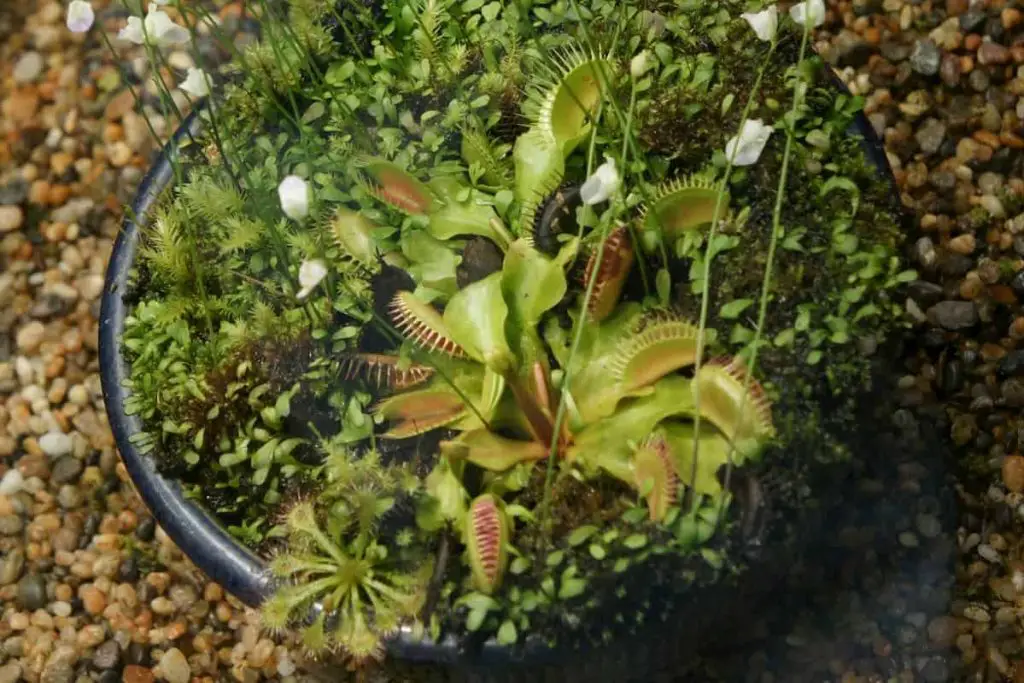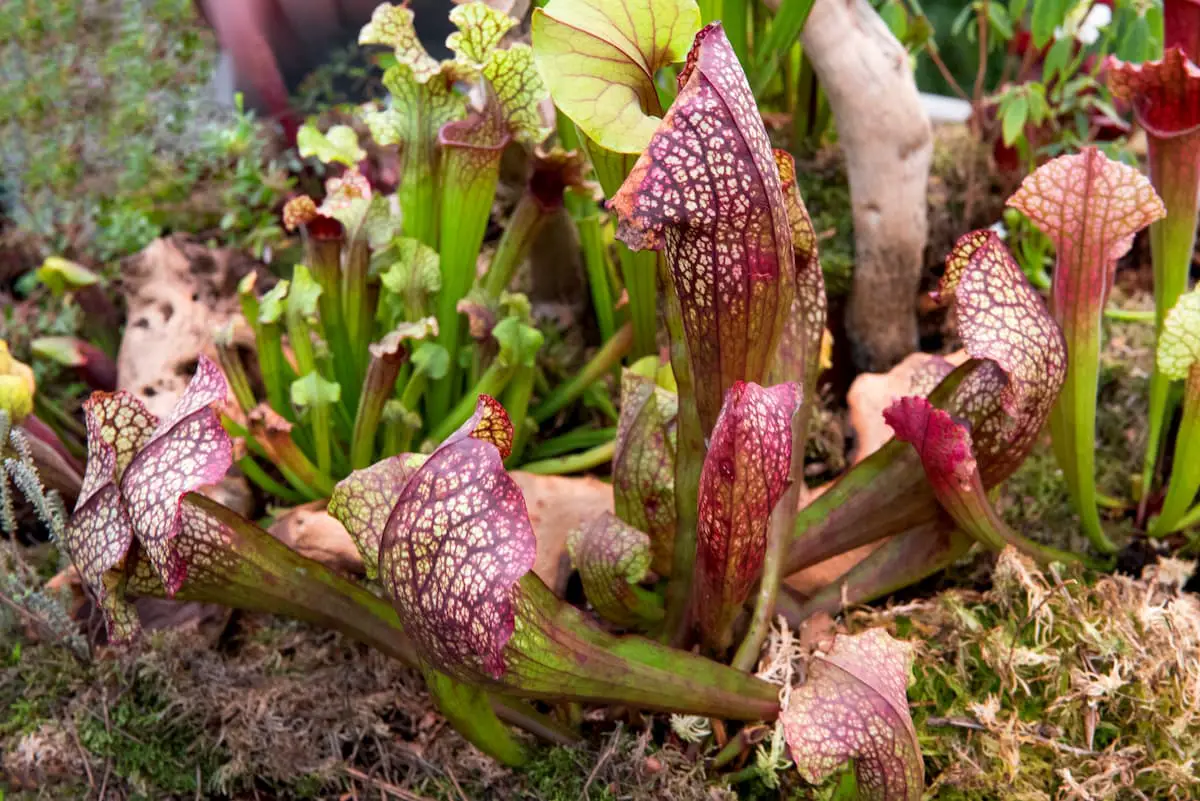Venus Fly Trap is one of the most popular carnivore plants that is a must if you’re looking forward to making a carnivore garden. Venus Fly Traps require a unique sort of soil mixture and without it growing them can be pretty difficult. Now, you must be curious about what soil does Venus Fly Trap need to thrive?
Venus Fly Traps need soil that has good ventilation as well as drainage. The soil should have a proper consistency and aeration. Use an equal ratio of peat moss and perlite based on the number of plants you’re growing. One thing to keep in mind is that never use any kind of fertilizer or potting soil. That could be fatal for them.
I highly recommend you to keep reading till the end to learn more about carnivore gardening, which sort of soil you should use and other important information.
What Soil Does Venus Fly Trap Need?
Venus Fly Traps are American natives and their soil needs to be low in minerals. Just like their natural habitat. Using normal plant garden soil will kill them.
Moreover, you cannot use any fertilizer. So, the best option you have is to make their specialized soil by yourself. That way, you can ensure providing what’s best for your Venus Fly Traps.
The best soil for Venus Fly Trap is mix based soil. Most preferably peat moss soil mix. A one to one ratio mixture of peat moss and perlite is considered to be the optimal and preferred mixture for almost all carnivorous plants.
While this ratio is generally good, let’s talk about the ingredients more specifically. Some experts recommend using silica sand more in volume than perlite. For instance, 6 parts peat moss, 4 parts silica whereas perlite only 2 parts.
Venus Fly Trap just like other carnivorous plants release minerals to the soil at a higher rate than what usual plants do. Silica sand comes to the rescue here. Silica is not soluble at all.
Instead, it’s hard and completely inert that makes it convenient for Venus Fly Trap and other carnivorous plants as it resists extra release of minerals to the soil.

Making the Soil Mix Step by Step
This is the best process to make some perfect soil to grow your Venus Fly Trap!
Choose A Pure Peat Moss
As mentioned earlier, Venus Fly Traps cannot take fertilizers or minerals or any additives of that sort. You need to choose a peat moss with zero additives.
Check the percentage of peat moss before buying and only buy the one that has 100% peat moss. Otherwise, the additives could even kill your plants.
Soak the Peat Moss
Let the peat moss soak in distilled water for a while. For this mixture, take five parts peat moss. While the peat moss is soaking, move on to the next step which is to rinse the silica sand.
Make sure the texture of peat moss is a bit muddy but not too dense. Peat moss not only has an amazing water holding capacity, but it also inhibits bacterial growth by creating an acidic environment.
This is much preferred by Venus Fly Traps.
Rinse Silica Sand
Take about three parts of silica sand and start rinsing it with distillate water. Keep rinsing and draining for quite a few times like four or five times until the water comes off clear and there is no dirt.
Silica sand is great for keeping the soil sandy and giving a quick-draining to the soil.
It also protects the soil and plants from algae, fungi weeds, etc. So, silica sand is great for carnivorous plants especially the Venus Fly Trap.
Rinse Perlite
Rinse perlite in a similar way for multiple times until you see clear water. Now the ratio of perlite and silica should be about 1:1. But more specifically, take two-part perlite for the best result.
Now perlite does the same work as silica sand but perlite is extremely porous and so allows more oxygen in the plant’s root zone enabling more ventilation.
Mix the Soil Ingredients
Finally mix the peat moss, silica sand, and perlite gradually until they are completely mixed. The texture will be fluffy and light to touch. Now, you have the perfect soil for carnivorous plants, especially the Venus Fly Trap.
Alternative Soil Ingredients
Instead of peat moss, you can use sphagnum moss. Sphagnum moss is just the non-decayed version of peat moss.
If you want to avoid all the trouble of mixing the soil, just buy an already prepared soil. There are plenty available online too.
Peat Moss Vs Sphagnum Moss for a Carnivore Garden
Sphagnum
Comparatively softer and more water retentive than peat moss. Generally, these grow in humid, dark places. Commercially you can purchase two types of sphagnum, long-fibered moss and milled moss.
However, for carnivore plant soil, you need the long-fibered one since it is left in its natural state.
Peat Moss
Peat moss is initially sphagnum moss. It’s a bit complicated. Basically, sphagnum moss dies and after its death, it gets overgrown by a new one.
This phenomenon keeps happening repeatedly over the years and it forms a kind of bog. This layer is known as peat moss. So, peat moss is just a product of sphagnum moss.
However, since peat moss is much more acidic and flakier, which is preferred by most carnivorous plants, it’s best to use peat moss rather than sphagnum moss.
Caring for A Venus Fly Trap Carnivore Garden
Caring for carnivorous plants is not an easy job let alone a garden. It’s complicated but it is worth it for those into exotic plants. Here are some of the basic tips you need to follow in order to grow your carnivore garden.
Soil
Carnivorous plants are mineral intolerant. Extra fertilizers or any sort of additives may even kill them. Most carnivorous plants prefer a mixture of perlite, peat moss, and sand over already prepared soil.
Also never put the plants into regular pot soil, it is deadly for them. Even to the point that it can cause death.
Humidity
The humidity level should be about 60% to 70% for your carnivore plants to grow healthy. So, keep your plants moist, or else the growth will slow down. This is true especially for Venus Fly Traps.
Sunlight
Carnivorous plants really like sunlight. The most common reason for death of these plants is the lack of sunlight. So, keeping them in a bright area is important.
At least give them 5 or 6 hours of natural sunlight on a daily basis and your plants will grow healthy and fast.
Winter Dormancy
Most carnivorous plants need winter dormancy. They are not tropical plants, mostly native to the north side. So, they need proper dormancy for about 3 months generally.
During the dormancy period, the plant will store energy mildly and stop growing. For this you need to keep you Venus Fly Trap in a cool place for a certain period.
Feeding
Feeding your carnivorous plants isn’t a requirement but it would provide extra energy and nutrition. However, never feed them any human food like sausage, chicken meats, etc. You can only feed those insects or their respective species.
If you feed them once a month, it’s more than enough for most species. One thing to keep in mind is that feeding only one “lip” of your plant is enough. You don’t need to go out and feed all the lips.
Repotting
Some plants need repotting in some seasons like summer or winter. The soil mix will eventually shrink and dry out with time. So, you need to repot your plants once or twice if necessary, in a year.
However, avoid repotting your plants when they are flowering. For Venus Fly Trap, it’s best to repot them in summer.
Final Thoughts on What Soil Does Venus Fly Trap Need
When you are beginning to build your garden with carnivorous plants like the Venus Fly Trap you need to be cautious in the building of the soil.
All of the normal items you would purchase will scorch and burn the plants roots so make sure to follow this information to build a healthy base for your plants to grow and succeed!
If you are wanting to build a terrarium for your Venus Fly Trap then click here for our in depth how to guide!



Leave a Reply